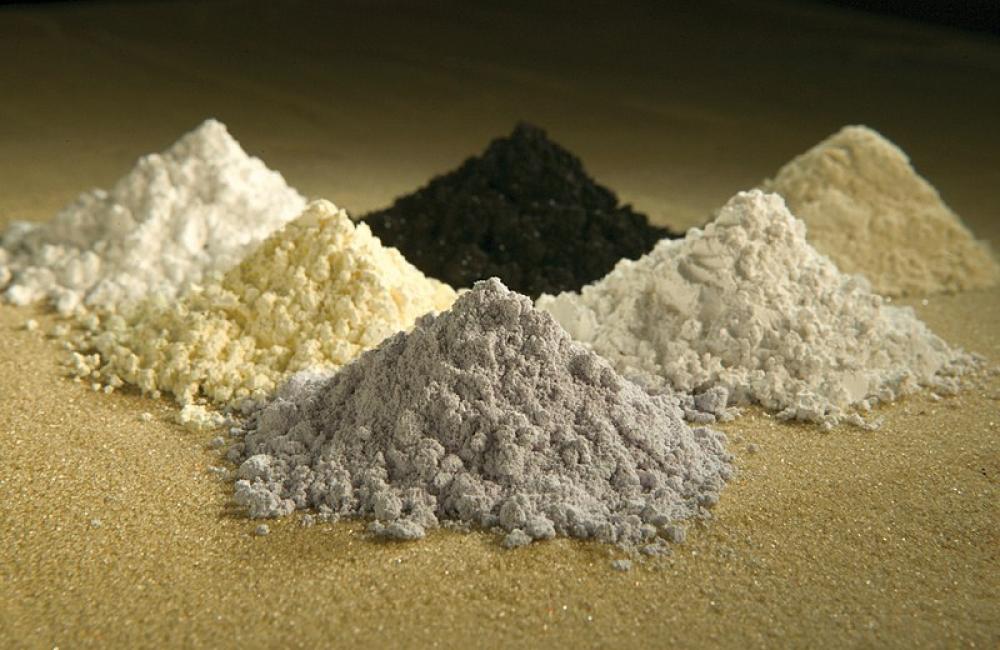Just Earth News | @justearthnews | 20 Apr 2023, 12:42 pm Print

Image credit: Wikimedia Commons
Since the 1980s, China has been the top global producer of Rare Earth Elements (REE), accounting for some 90% of the material. It is also home to some of the world’s largest deposits.
About 35% of the world’s reserves of rare-earth metals are in China1. China currently dominates the REE market, accounting for 85% of global supply in 20162. According to reports, the production increased by more than 27% in the first half of 2021, and the REE extraction reached record levels as demand increased.
There are a set of 17 rare earth elements-15 lanthanides of the periodic table (La-Lu) and scandium (Sc) & yttrium (Y) which are abundant in the earth's crust. The demand for these elements is expected to increase dramatically over the next few years. They are found in low concentrations in minerals and are difficult to separate from other elements, making them "rare".3
They have a wide range of applications, from magnets, lasers, GPS satellites, photoluminescence, computer components, lighting devices and electronics. An electric car requires 6 times more minerals than a regular car, and a wind farm requires 9 times more minerals than a gas plant. According to current estimates, demand for rare earths could increase six fold by 2040.
China’s cheap and polluting methods of mining these rare earth elements has led it to outperform its competitors and gain a foothold in the international REE market. For instance, the largest rare earths slurry lake in the world is located at the Baiyun Obo Rare Earths Mine in Inner Mongolia and contains more than 70,000 tonnes of radioactive thorium. Since 1958, a mine and processing facility have been operating nearby, and over the years, residents in the lake's vicinity have witnessed the death of numerous crops and animals.
Since 2000, multiple instances of "cancer villages" have been reported locally, and the lake has been referred to as a "time bomb" hanging over the Yellow River, one of China's most important waterways. They also reported that there are plenty more examples of unsafe mines throughout China6.
Furthermore, the safety of the workers in these mines is not a priority for China. The toxin exposure leads to skin irritations and disruptions to the respiratory, nervous and cardiovascular systems7. Several cases of forced labour and ongoing human rights abuses by the Chinese government have also been reported in the Xinjiang Autonomous Region due to unsafe mining practices in the region.
China understands the value of its monopoly over REE mining and wants to maintain the status quo. Thus, China now appears to be moving its operations towards the African region.
Some of this work is done by private companies, but the six largest mining companies are state-owned. China obtained exclusive rights to REE deposits in several African countries in exchange for building infrastructure. For example, China acquired a commercial license for mining in the Democratic Republic of the Congo and Kenya in exchange for the construction of national highways, hospitals and a $666 million data center respectively.
New agreements are emerging in Cameroon, Angola, Tanzania and others as well8. These mines present distinct environmental issues as China seeks out additional rare earth deposits in Africa and as new competitors enter the market.
Businesses and governments are relying more on rare earths as part of their sustainable energy shift. However, these mining methods are harmful to the environment even if they don't emit carbon dioxide. According to reports, for every ton of rare earth that is produced, the mining process yields 13 kg of dust, 9,600–12,200 cubic metres of waste gas, 75 cubic metres of wastewater, and 1 ton of radioactive residue.
Green energy has its benefits, but we must not allow toxic mining practices to damage it. In order to improve mine closure procedures, address the enormous amounts of energy and water required by conventional mining techniques, and ensure that these practices works well with current technologies, green technologies are especially needed.
- Catastrophe alert: UN warns Asia is facing unprecedented cyclones and rainfall
- Catastrophe alert: UN warns Asia is facing unprecedented cyclones and rainfall
- India’s West Coast Turns Protector: Whale Shark Rescues Surge from Gujarat to Kerala
- Belém COP30 announces major climate finance boost
- Three dead after magnitude 5.7 earthquake hits Bangladesh, strong tremors felt in Kolkata



-1763561110.jpg)


